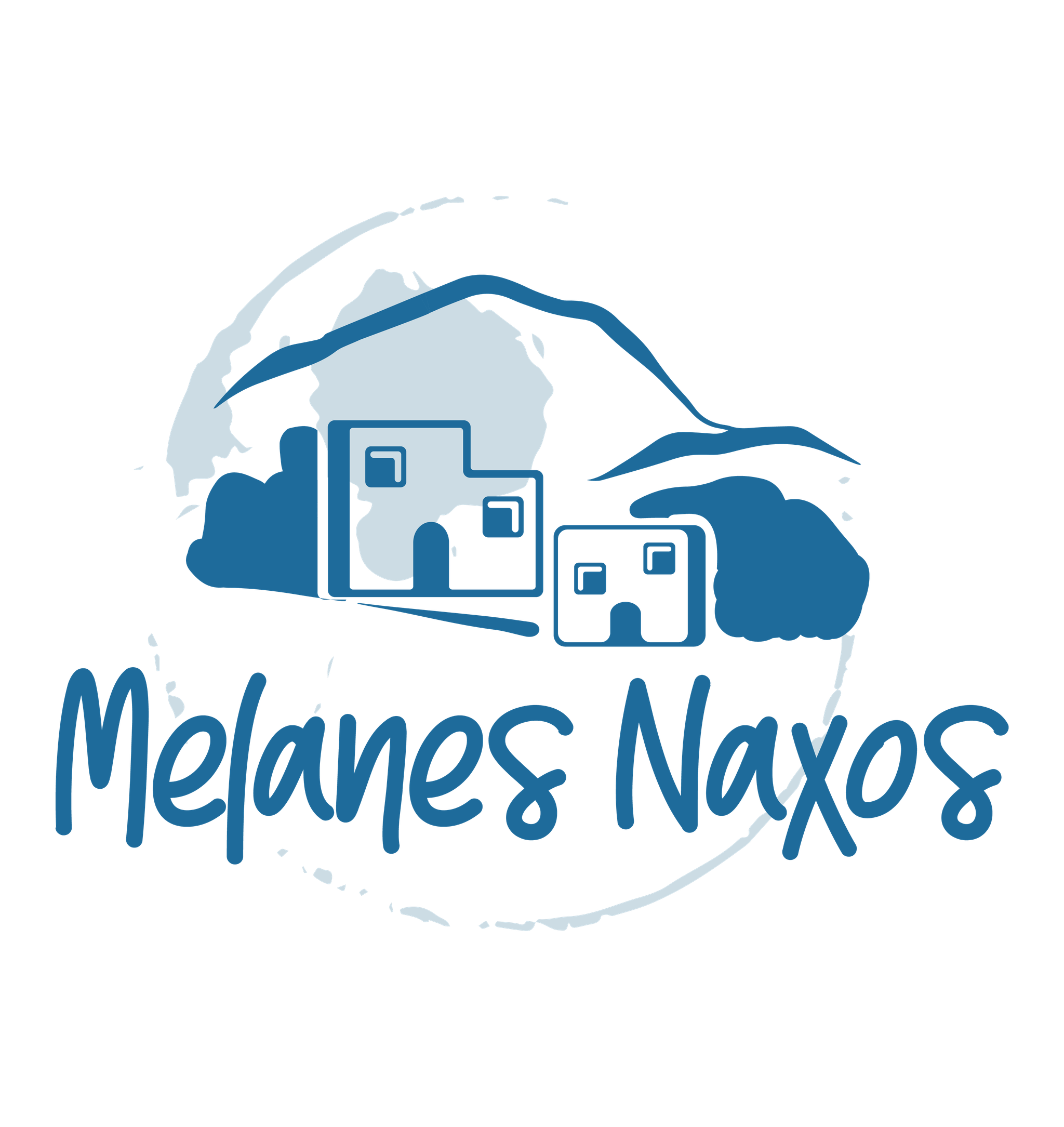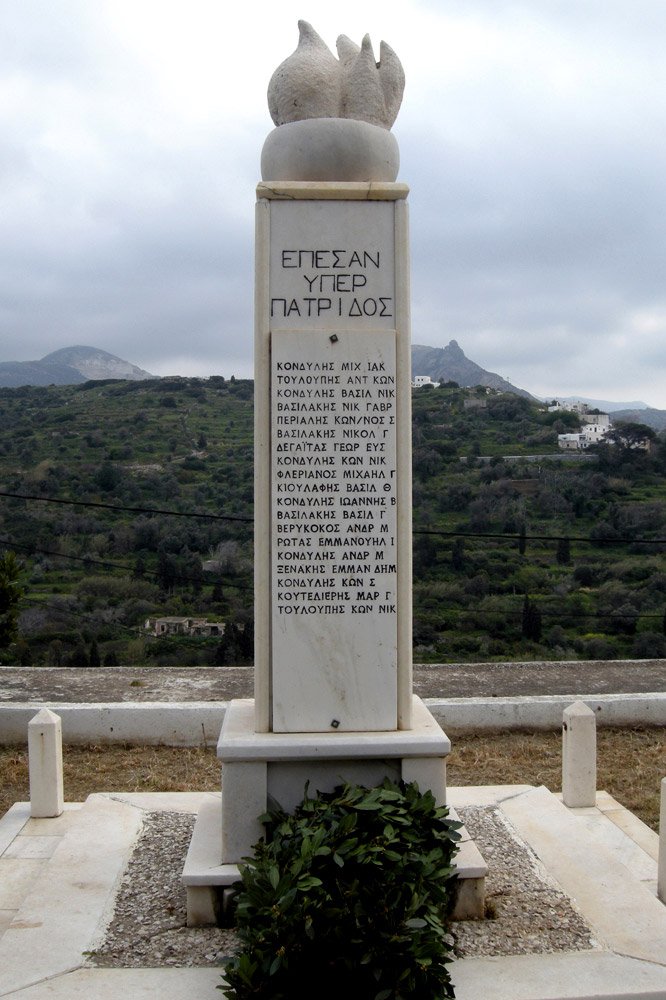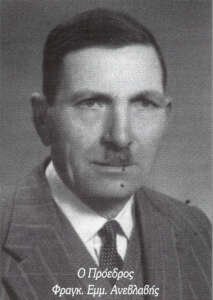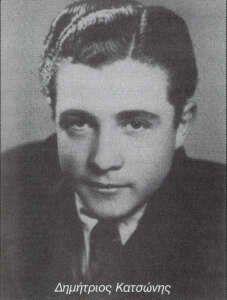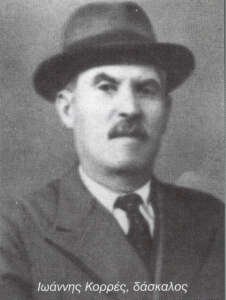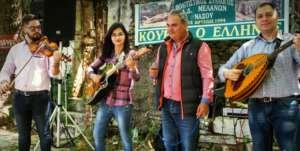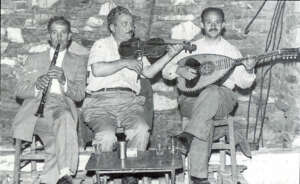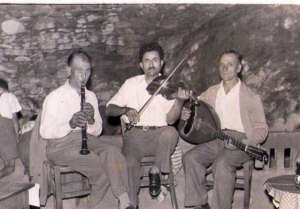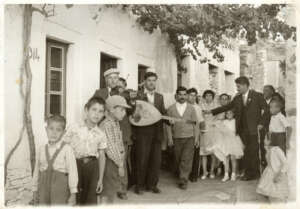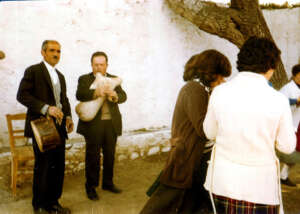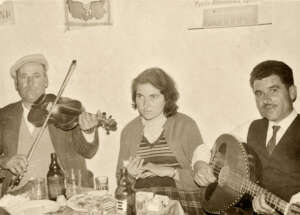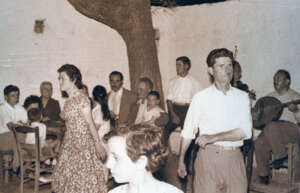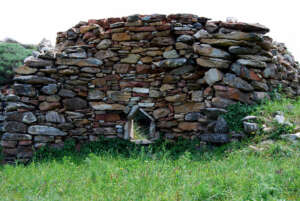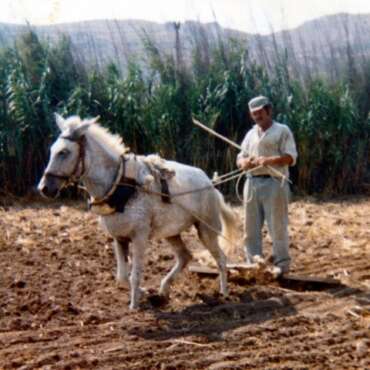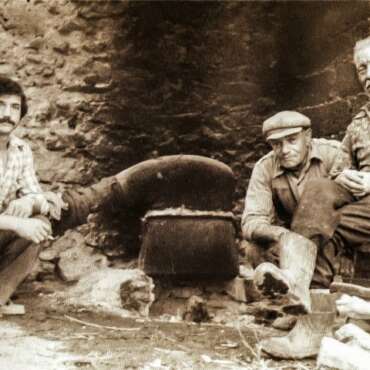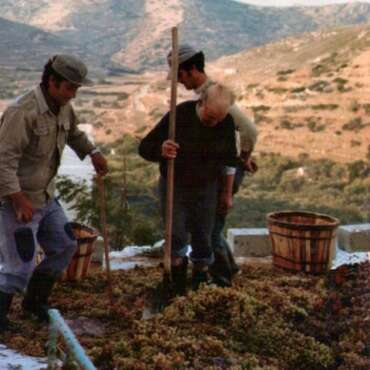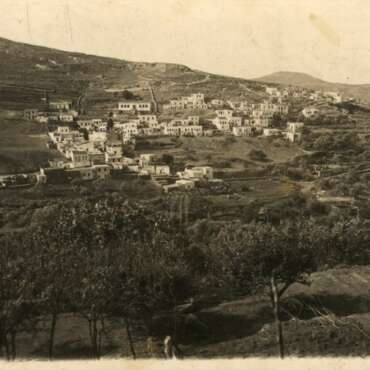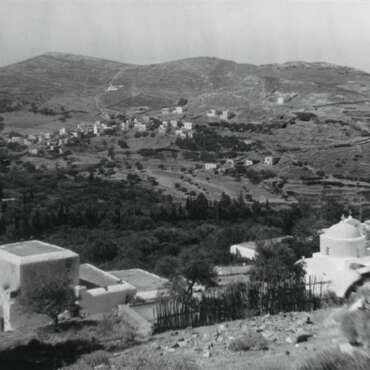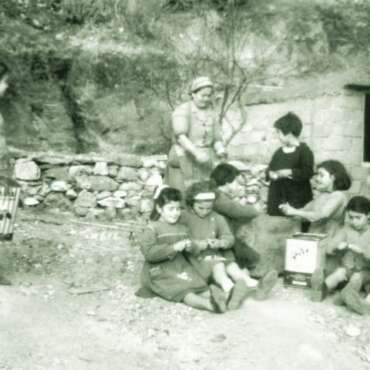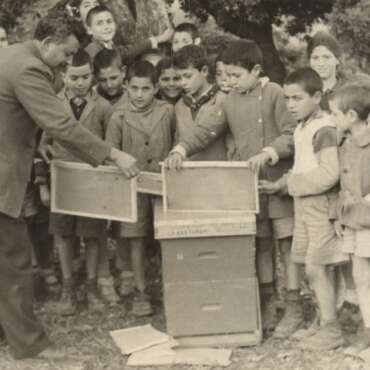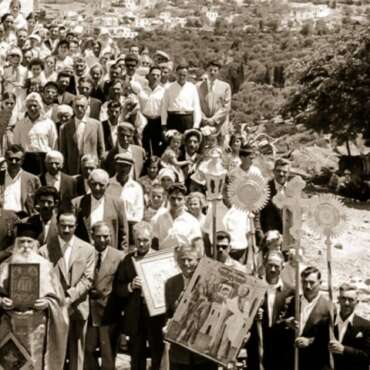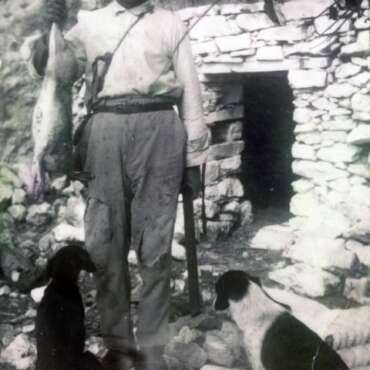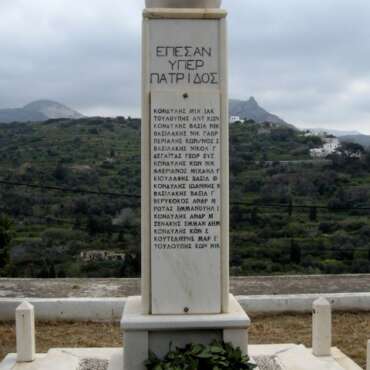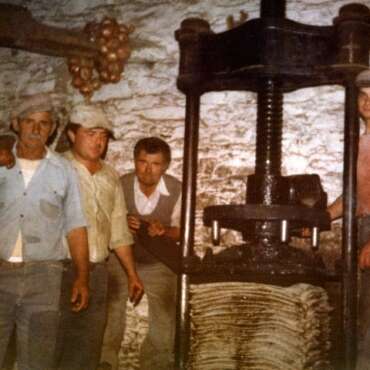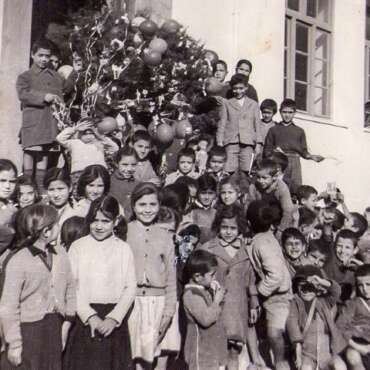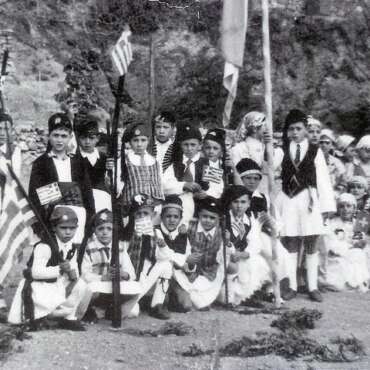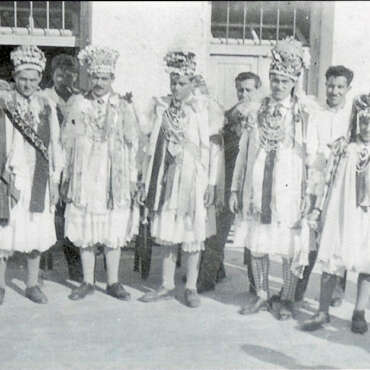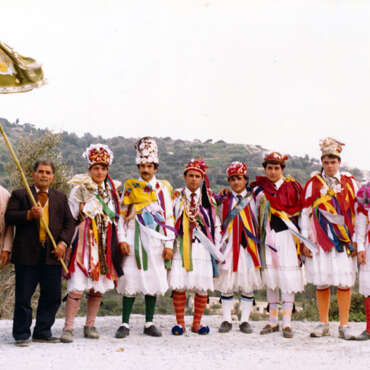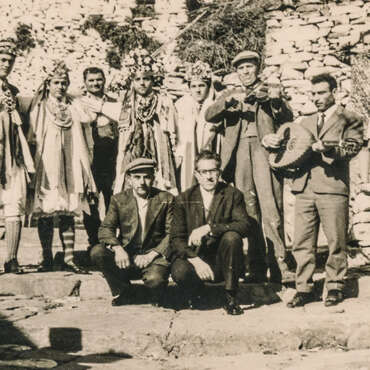Drops of History
MODERN HISTORY
ADMINISTRATIVE CHANGES
In 1835, with 275 inhabitants (65 families), it was annexed to the newly established municipality of Vivlos in the province of Naxos, based in the settlement of Galanado.
In 1912, it was decided that the settlements, which have more than 300 inhabitants and an elementary school, would become independent communities. The settlement of Melanes is separated from the municipality of Vivlos.
In 1997, with the implementation of the "Kapodistrias" Program (law 2539/97), the settlement was annexed to the Municipality of Naxos, while it was also the center of the homonymous Municipal Department. With the implementation of the "Kallikratis" Program in 2010 (law 3852/2010), the settlement became part of the Municipality of Naxos. Together with the settlements of Agios Thaleleos (106 inhabitants), Kourounochori (105 inhabitants) and Mylos (27 inhabitants) they constitute the Local Community of Melanes (652 inhabitants).
The Local Community of Melanes belongs to the Municipal Unit of Naxos, of the municipality of Naxos and Small Cyclades, of the regional unit of Naxos (the former prefecture of Cyclades), in the South Aegean Region.
| Year | 1835 | 1879 | 1889 | 1896 | 1907 | 1920 | 1928 | 1940 | 1951 | 1961 | 1971 | 1981 | 1991 | 2001 | 2011 |
| Population | 275 | 411* | 395* | 435* | 426* | 273 | 307 | 318 | 387 | 411 | 377 | 370 | 374 | 413 | 414 |
(*) The inhabitants of the settlements of Kourounochori and Myloi, are also included at the years of 1879, 1889, 1896 and 1907.
The Kileler of Naxos
In 1944, on the days of liberation, 123 years after the revolution of 1821 and 34 after the revolt of the peasants in the Thessalian plain (Kileler) against the ‘tsiflikades’ (landlords), the feudal structures of the Frankish rule still exist in Naxos, and especially in Melanes. This situation worsened during the Occupation with the support of the Italian occupiers.
In the villages of Melanes, the situation is unbearable and the peasant farmers groan under the yoke of the Frankish feudal lords. In the early summer of 1944, three people begin discussing the idea of occupying the estates by the oppressed Melanes people and planning the operation. They are the teacher of the village, Ioannis M. Korres, the President of the community of Melanes, Frangiskos Anevlavis and the university student Dimitris Katsonis, an educated young man, from Zagora, Pelion, with progressive ideas, who was married to Melanes. These three will initiate in the case together with other villagers, the village priest Stefanos Vasilakis, the members of the community Michalis Flerianos and Stathis Korakitis and many peasants.
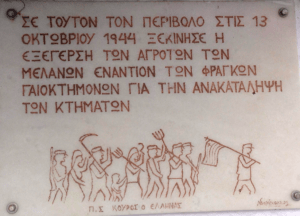 On October 12, 1944, word spread throughout the island that the Germans were leaving. The organizers of the uprising believed that the time had come to implement the plan to occupy the estates and decided to act. On October 13, 1944, at dawn, and while the siege against the Germans had begun in the castle of Chora, Katsonis rang the bells of the church of Agioi Apostoloi. More than 300 villagers (men, women and children) gathered in the churchyard. The 300 with the flag, held by Dimitris Katsonis, and the priest, the teacher, the president in the front line, shouting the slogan of the Greek-Albanian Front "AERA", start a dynamic march towards the Demari estate, the center of the Franks' land, a large building complex, which was located on the slope opposite the village. In the process, grenade launchers were heard, remnants of the Italian occupation, which were thrown to intimidate the Franks. Before the march approaches Demari, the Franks flee in fear to the Tower of Kourounochori for more security. The occupation of the estate took place without difficulty. A guard team of the estate was appointed by the leaders.
On October 12, 1944, word spread throughout the island that the Germans were leaving. The organizers of the uprising believed that the time had come to implement the plan to occupy the estates and decided to act. On October 13, 1944, at dawn, and while the siege against the Germans had begun in the castle of Chora, Katsonis rang the bells of the church of Agioi Apostoloi. More than 300 villagers (men, women and children) gathered in the churchyard. The 300 with the flag, held by Dimitris Katsonis, and the priest, the teacher, the president in the front line, shouting the slogan of the Greek-Albanian Front "AERA", start a dynamic march towards the Demari estate, the center of the Franks' land, a large building complex, which was located on the slope opposite the village. In the process, grenade launchers were heard, remnants of the Italian occupation, which were thrown to intimidate the Franks. Before the march approaches Demari, the Franks flee in fear to the Tower of Kourounochori for more security. The occupation of the estate took place without difficulty. A guard team of the estate was appointed by the leaders.
The next day, October 14, 1944, at noon, the three-member Administrative Committee of the Melanes Community met and decided to request with a memorandum from the Prefect of Cyclades and the National Government the expropriation of the property of the Catholic Church and the Catholic Association "Timios Stavros" its distribution to the landless farmers of Melanes.
At the same time, a group of Apiranthos animal thieves attempted to occupy Kalamitsia, the most fertile and largest estate in the area, along with the huge building complex. The Melanes people noticed them and with the help of soldiers of the Ieros Lochos arrested them, disarmed them and transported them to the Melanes. There, the angry inhabitants savagely rebuked them and drove them away.
The Melanes people uprising was the beginning of the forced expropriation of 5,000 acres of arable land in favour of the landless farmers of the area and among them were the fertile estates of the Holy Cross and the Catholic Church. The relevant legislative decree was passed by the Parliament on April 3, 1947.
The uprising of the Melanite peasants can be described as the Kileler of Naxos. It is a great historical event, an important pan-national anniversary.
The revolt of the Melanes people can be characterized as the Kileler of Naxos. It is a great historical event, an important Panaxia anniversary. On the initiative of the Cultural Association of Melanes KOUROS, o Ellinas is celebrated every year in the courtyard of the church of Agioi Apostoloi, where it started and its protagonists are honored.
Text: Nikolaos Levogiannis, Philologist.
Source: https://naxospress.gr/istories/15-oktovrioy-1944-melanes-kileler-tis-naxoy-0/
Traditional Music - Festivals
The musical tradition of the Melanes until 1930 was limited to a few musical instruments such as tsabouna, dubaki, and souvlari with which the inhabitants mainly celebrated on the days of Carnival. Also, on other occasions such as weddings and church festivals, musicians came from other villages, mainly from Kinidaros which was a source of musicians for Naxos.
In the following years, the violin and the lute joined the festivities of the village with Nikola Kondili (Potonikolas) as the main representative for many decades, who was taught the violin by Nikolas Konitopoulos. He collaborated with Stamatis Kapris from Agersani, Nikola Xenakis (Chondros) and Giorgos Mavromatakis (Kamariano) who played the lute. Nowadays, the tradition of island music is continued with great success by Gavrilis Kondylis (violin-song), Manolis Kondylis (lute-song), Nikos Kondylis (lute), Giannis Verykokkos (song), Aris Verykokkos (violin- song), Nikolas Verykokkos (violin-song), George Vasilakis (violin), Nikolas Anevlavis (lute-song) and Maria Verykokkou with Irini Verykokkou in song and many more who participate in the festivals in Melanes and the other villages of Naxos.
Source: Article by Gavrilis Kondylis, ''Musical Tradition of Melanes'' of the newspaper ''Melanitikes Ores" issue 1 July-August-September 2002
The annual cycle of festivals begins with the festival of Agios Thalaleos (May 20) in the homonymous village and Agioi Apostoloi (June 29) which lasts three days. The first day (29 June) is dedicated to the Apostles Peter and Paul, the second to the Twelve Apostles and on the first of July, Agioi Anargyroi. After the celebration of the Apostles follows the festival of the Metamorphosis of Sotiros on August 6 in Kourounochori.
All the above festivals are held in the villages, where there is a corresponding church. The celebration of the Assumption of the Virgin Mary is celebrated in the church of Panagia Kritomati. The cycle of festivals closes on September 8 with the celebration of the Genesis of the Virgin Mary in Agios Thaleleios. A special occasion is the celebration of Agios Nektarios in the church located on the road Myloi - Kourounochori and was built in 1967 after a miracle that took place in the area on November 21, 1965.
Source: Diploma thesis of Vilaeti Olgas, Ritual, performance and locality: the ethnographic example of Kordelades in Melanes, Naxos. University of Thessaly 2007
Kilns
One of the main occupations of the inhabitants of Melanes was lime kilns. Usually, a group of 5-6 people formed an assembly and started the preparation of the lime production. From March to October was the period of employment with lime kilns. First, the branches of various bushes were collected. They made bundles and the quantity was depending on the size of the kiln. It was usually from 600 ounces to 1,200 and the capacity of the kiln from 10,000 ounces to 35,000 ounces. After removing the branches, they then removed the ‘spharama’, the limestone. They carried it in the kiln with the animals and built it in a special way by an experienced craftsman. Then they lit the kiln and the baking time was 3 days and the shift was usually 2 hours due to the high temperature. After baking, it was transported for use, the lime was loaded into sacks and carried with the animals to the villages of Naxos and Chora at a price usually of 1 drachma per oka. The kilns stopped operating in this way in 1967 and were replaced by a modern lime factory.
Source: Article by Nektarios Degaitas, Philologist, ''Kilns'' of the newspaper ''Melanitikes Ores" issue 1 July-August-September 2002
Watermills
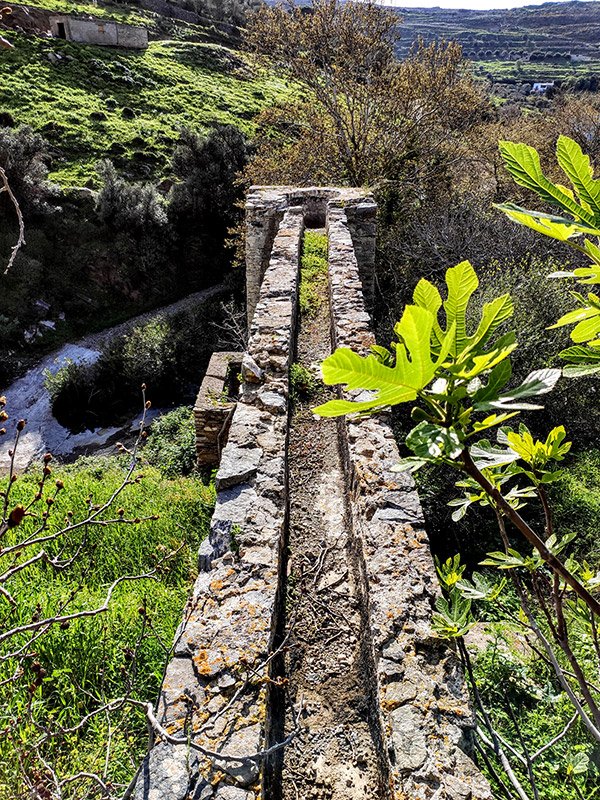 The watermills had sophisticated mechanisms. Their operation was based on the utilization of the dynamics and kinetic energy of the water drop in order to set in motion a mechanism for the grinding of wheat, for flour production.
The watermills had sophisticated mechanisms. Their operation was based on the utilization of the dynamics and kinetic energy of the water drop in order to set in motion a mechanism for the grinding of wheat, for flour production.
Typically a watermill consisted of two main parts:
- the tower, a tall structure from which water fell to obtain the necessary kinetic energy, and
- the main building of the watermill.
The main building (no matter how big or small) consisted of two levels, a basement and a ground floor:
The basement or fountain was usually a low-ceilinged area where the reel was located, the first part of the mechanism that utilized energy from falling water. The miller could operate the entire mechanism from the ground floor. The flow of water rotated the spinner that through a vertical wooden shaft transmitted the movement to the millstones that crushed the wheat on the ground floor. Therefore, the ground floor was kept completely dry, as water from the tower was led directly to the basement and then out.
Watermills were usually built of limestone and mortar (lime, clay or sand). In their simplest form, it consisted of a one-room rectangular building with a basement (zuri) and a series of stone arches that supported the roof. But there were also multi-storey watermills with many rooms.
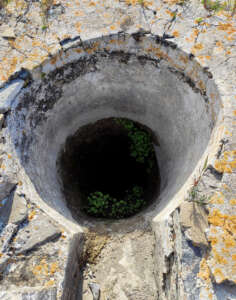 Their roofs were usually made of twigs, reeds and mud, or of large slate slabs. In some cases a small house for the miller was connected to the watermill, which proves the continuous operation of the watermill throughout the year.
Their roofs were usually made of twigs, reeds and mud, or of large slate slabs. In some cases a small house for the miller was connected to the watermill, which proves the continuous operation of the watermill throughout the year.
After exploitation in the mill, the water was diverted back to the river through canals and on its way watered nearby gardens and fields.
The traditional watermill was therefore an environmentally friendly facility, with a mechanism that used only the dynamic and kinetic energy of the water without consuming raw materials and without producing waste or by-products.
Source: A case study was developed in Phase I of the HYDRIA program (2008-2009) with the support of UNESCO (Participation Program) and the European Core funding program of MIO-ECSDE.
Contributors
General curator: Irini Gratsia, archaeologist, MONUMENTA
Research: Daphne Papadopoulou MONUMENTA
Stelios Lekakis MONUMENTA
Text: Daphne Papadopoulou MONUMENTA
Kordelades - Historical Background
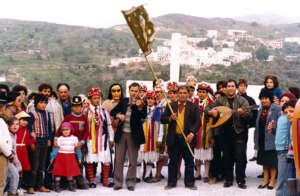 In the event of Kordelades, the locals indulge in a particular type of hospitality with a competitive and giving character. From the second week of the Carnival, families usually dress the young man of the ‘Kordelas’ in a handmade costume that consists, among other things, of selected dowry pieces of the young members of the family.
In the event of Kordelades, the locals indulge in a particular type of hospitality with a competitive and giving character. From the second week of the Carnival, families usually dress the young man of the ‘Kordelas’ in a handmade costume that consists, among other things, of selected dowry pieces of the young members of the family.
The costume consists of the fez, the brakadiko (underwear), with the large tassel that is decorated with various pins, the vest with the colorful ribbons, the colored ribbons are the most important element of the Ribbon costume, the white shirt, the belt, an improvised bridal round "of the bed, which is characterized as a" fustanela ", the colorful socks, the woven garters. The costume has colored ribbons and scarves on the shoulders and one on the back.
In the old days, the preparation started in the middle of the "Kreatini" week and the women competed in decorating the Kordela (even if it was their fiancé or husband), as did the villages among themselves, to distinguish the most deserving ones.
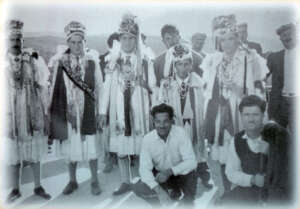 Everyone who is going to dress up as Kordelades sets up the so-called ‘bairaki’, the flag of the event, a long pole that carries a flag with the image of Markos Botsaris. The flag exists in all the villages which follow the custom.
Everyone who is going to dress up as Kordelades sets up the so-called ‘bairaki’, the flag of the event, a long pole that carries a flag with the image of Markos Botsaris. The flag exists in all the villages which follow the custom.
On Monday of the last carnival week, a group is formed by the Kordelades and their entourage, which consists of all the male members of the community, the flag bearer and the 'tsatsos robbers', who have a duty to guard the Kordelades and the flag. The group accompanied by musicians, who play the Melanes song of "Dirla", visits the neighboring villages after consultation with them for the day and time of the visit. The entry and exit of Kordelades in the villages is done with rifles and the accompaniment of musical instruments, which continue during the event.
In the old days, the group of Cordelians appeared as an army and the visit had a character of demonstration, proof of strength and daring and there was intense competition between the villages. If a group of Kordelades is on its way, it should not meet with another bairaki, as the locals say, because there is a "battle" to see which bairaki will prevail. To avoid a clash, the two bairaki must "kiss", and meet crosswise, and the byers exchange coins.
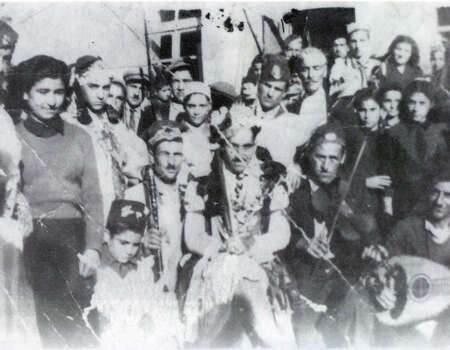 In Melanes, the Kordelades had stopped during World War II (1940-1944) and began at the urging of members of specific families in the village. In 1960 it stopped for about ten years due to the conflict between the inhabitants of Melanes and the inhabitants of Kourounochori and Myloi and started after a joint consultation of the young members of the same families. In 1975 the Kordelades stopped visiting Potamia village because there was no participation (from the villages of Potamia) due to lack of young people.
In Melanes, the Kordelades had stopped during World War II (1940-1944) and began at the urging of members of specific families in the village. In 1960 it stopped for about ten years due to the conflict between the inhabitants of Melanes and the inhabitants of Kourounochori and Myloi and started after a joint consultation of the young members of the same families. In 1975 the Kordelades stopped visiting Potamia village because there was no participation (from the villages of Potamia) due to lack of young people.
After the founding of the local association "Kouros Ellinas" (1995) in the organization of the event participates the local association in collaboration with the local associations of the neighboring villages and the owners of the dining areas, where the Kordelades and their followers are hosted. In this particular event, each village is obliged to reciprocate the honorary visit during the week next year and in fact to offer it first, otherwise, the visit will not be repeated.
Source: Diploma thesis of Vilaeti Olgas, Ritual, performance and locality: the ethnographic example of Kordelades in Melanes, Naxos. University of Thessaly 2007
